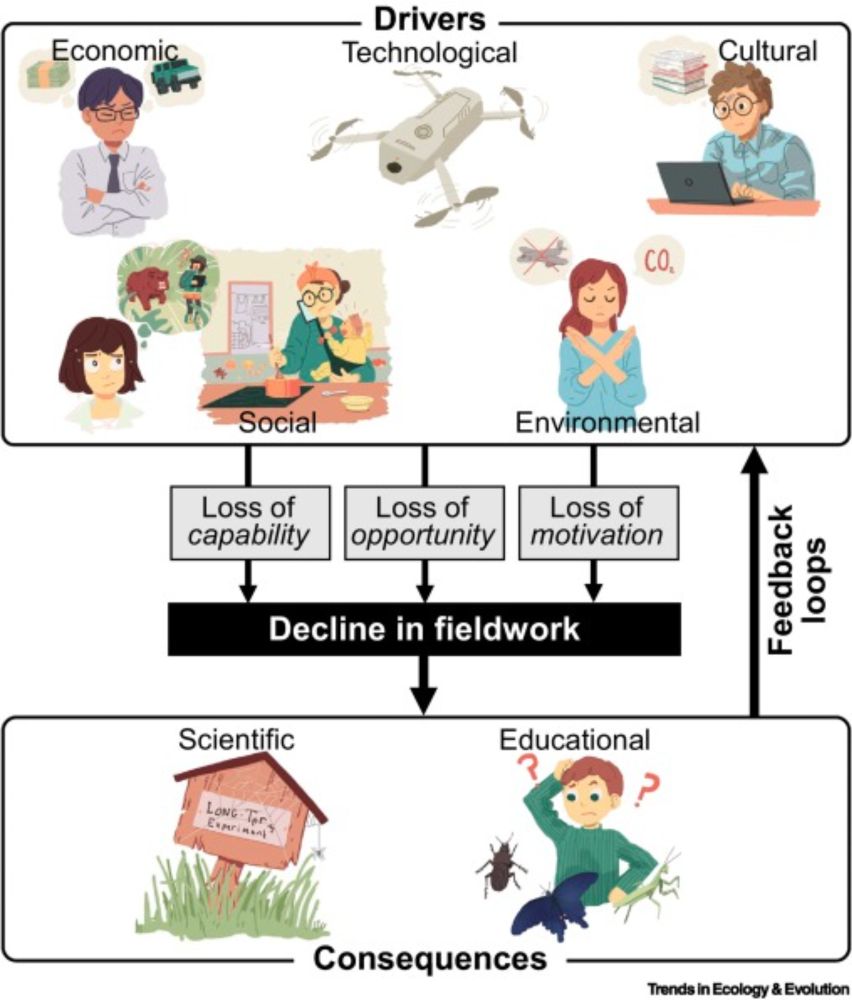
We are hiring - PDRA position exploring how information access shapes social dynamics in killer whales. Collaboration with @samellisq.bsky.social @drwhale.bsky.social Prof Dan Franks (York) start 1st Nov (or ASAP) end 31st Oct 2028. Apps close on 19th Oct.
www.jobs.ac.uk/job/DOT336/p...
23.09.2025 18:29 — 👍 30 🔁 44 💬 1 📌 5

Models as Prediction Machines: How to Convert Confusing Coefficients into Clear Quantities
Abstract
Psychological researchers usually make sense of regression models by interpreting coefficient estimates directly. This works well enough for simple linear models, but is more challenging for more complex models with, for example, categorical variables, interactions, non-linearities, and hierarchical structures. Here, we introduce an alternative approach to making sense of statistical models. The central idea is to abstract away from the mechanics of estimation, and to treat models as “counterfactual prediction machines,” which are subsequently queried to estimate quantities and conduct tests that matter substantively. This workflow is model-agnostic; it can be applied in a consistent fashion to draw causal or descriptive inference from a wide range of models. We illustrate how to implement this workflow with the marginaleffects package, which supports over 100 different classes of models in R and Python, and present two worked examples. These examples show how the workflow can be applied across designs (e.g., observational study, randomized experiment) to answer different research questions (e.g., associations, causal effects, effect heterogeneity) while facing various challenges (e.g., controlling for confounders in a flexible manner, modelling ordinal outcomes, and interpreting non-linear models).

Figure illustrating model predictions. On the X-axis the predictor, annual gross income in Euro. On the Y-axis the outcome, predicted life satisfaction. A solid line marks the curve of predictions on which individual data points are marked as model-implied outcomes at incomes of interest. Comparing two such predictions gives us a comparison. We can also fit a tangent to the line of predictions, which illustrates the slope at any given point of the curve.

A figure illustrating various ways to include age as a predictor in a model. On the x-axis age (predictor), on the y-axis the outcome (model-implied importance of friends, including confidence intervals).
Illustrated are
1. age as a categorical predictor, resultings in the predictions bouncing around a lot with wide confidence intervals
2. age as a linear predictor, which forces a straight line through the data points that has a very tight confidence band and
3. age splines, which lies somewhere in between as it smoothly follows the data but has more uncertainty than the straight line.
Ever stared at a table of regression coefficients & wondered what you're doing with your life?
Very excited to share this gentle introduction to another way of making sense of statistical models (w @vincentab.bsky.social)
Preprint: doi.org/10.31234/osf...
Website: j-rohrer.github.io/marginal-psy...
25.08.2025 11:49 — 👍 943 🔁 283 💬 48 📌 19
Pleasure and honour to have the opportunity to discuss some of the work we have been doing on over the last few years.
Thanks to @behaviour2025.bsky.social for the invite (and great conference), @asab.org for the funding and everyone who turned up to listen at 9am on day 5.
29.08.2025 10:25 — 👍 6 🔁 1 💬 0 📌 0

Animal Behaviour from Exeter and Bristol, plus some of our alumni, went to @behaviour2025.bsky.social in Kolkata and had mountains of rice. @crab-exeter.bsky.social @bristolbiosci.bsky.social @uniexecec.bsky.social
27.08.2025 17:15 — 👍 27 🔁 5 💬 0 📌 0

It was a real pleasure to have accidently been involved in Joe Wilde's (not here) paper published last week: doi.org/10.1098/rspb...
It has terrifying Bayesian Hidden Markov Models, important insights about dynamic sexual signalling, and a robot crab called "Wavey Dave"- what's not to love?
20.08.2025 08:53 — 👍 3 🔁 0 💬 0 📌 0
BEHAVIOR IS THE WAY
07.08.2025 17:16 — 👍 25 🔁 9 💬 0 📌 0
Five misunderstandings in animal social network analysis
🐒🕸️ New preprint! Confused about how to model animal social networks?
ASNA can be confusing—but also full of opportunity. We break down 5 common misunderstandings in animal social network analysis and share solutions from behavioural ecology, anthro, stats, & network science. Hope it helps!
A 🧵
04.08.2025 16:21 — 👍 43 🔁 23 💬 2 📌 3
I learned a lot working on this new paper with this group of network scientists, sociologists, anthropologists and behavioural ecologists. We're hoping it helps anyone who feels (understandably!) lost in the animal social networks weeds.
06.08.2025 14:39 — 👍 25 🔁 8 💬 0 📌 0
Loved listening to this discussion, and so pleased our research on the gorillas monitored by @savinggorillas.bsky.social, led by the fantastic Vic Martignac is resonating with so many!
06.08.2025 11:01 — 👍 5 🔁 3 💬 1 📌 0
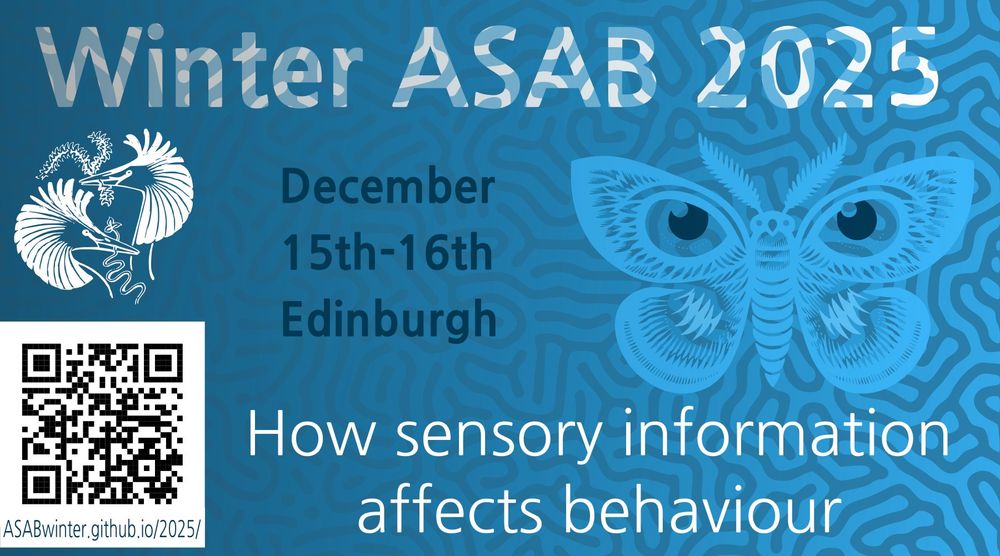
Come join us at the @asab.org Winter Conference 2025: how sensory info affects behaviour.
15th & 16th Dec, abstracts due end Aug. More info and registration asabwinter.github.io/2025
Co-hosted with @jtroscianko.bsky.social and Innes Cuthill
29.07.2025 16:50 — 👍 24 🔁 11 💬 1 📌 0
![Comic. [two people in labcoats look at body pierced with blade draped over bench] PERSON 1: We found him lying uncomformably on the lab bench. I wonder if the iron-rich intrusion in his back is related. PERSON 2 with ponytail: It could be clastic. Maybe a rift opened in his body, and the intrusive material later fell into the hole. [caption] The Geology Department Investigates Their First Murder](https://cdn.bsky.app/img/feed_thumbnail/plain/did:plc:cz73r7iyiqn26upot4jtjdhk/bafkreidexczuo22iq6o77sexfgdpvgx6baetimwtkzoeb7h7glon7enx4y@jpeg)
Comic. [two people in labcoats look at body pierced with blade draped over bench] PERSON 1: We found him lying uncomformably on the lab bench. I wonder if the iron-rich intrusion in his back is related. PERSON 2 with ponytail: It could be clastic. Maybe a rift opened in his body, and the intrusive material later fell into the hole. [caption] The Geology Department Investigates Their First Murder
Geology Murder
xkcd.com/3112/
09.07.2025 01:19 — 👍 5777 🔁 876 💬 50 📌 38
Our #study finds that #male #dominance isn't the norm among #primates, and starts to unravel what shapes flexibility in intersexual power
paper (OA) https://www.pnas.org/doi/10.1073/pnas.2500405122
press release https://www.mpg.de/24986976/0630-evan-beyond-the-alpha-male-150495-x?c=2249
08.07.2025 13:55 — 👍 75 🔁 50 💬 3 📌 2
![5-panel comic. (1) [teacher with long hair next to whiteboard] TEACHER: I’m supposed to give you the tools to do good science. (2) [teacher addressing students] But what *are* those tools? Methodology is hard and there are so many ways to get incorrect results. What is the magic ingredient that makes for good science? (3) TEACHER: To figure it out, I ran a regression with all the factors people say are important: [embedded list in sub-panel, cut off at end] Outcome variable: correct scientific results. Predictors: collaboration; skepticism of others’ claims; questioning your own beliefs; trying to falsify hypotheses; checking citations; statistical rigor; blinded analysis; financial disclosure; open data (4) TEACHER: The regression says two ingredients are the most crucial: 1) genuine curiosity about the answer to a question, and 2) ammonium hydroxide. (5) STUDENT: Wait, why did *ammonia* score so high? How did it even get on the list? LONG HAIR: ...And now you’re doing good science!](https://cdn.bsky.app/img/feed_thumbnail/plain/did:plc:cz73r7iyiqn26upot4jtjdhk/bafkreigzaphhj4mfgfrxddlvdmw47335gnwzqbfqvrnff5x4oovgpf36nq@jpeg)
5-panel comic. (1) [teacher with long hair next to whiteboard] TEACHER: I’m supposed to give you the tools to do good science. (2) [teacher addressing students] But what *are* those tools? Methodology is hard and there are so many ways to get incorrect results. What is the magic ingredient that makes for good science? (3) TEACHER: To figure it out, I ran a regression with all the factors people say are important: [embedded list in sub-panel, cut off at end] Outcome variable: correct scientific results. Predictors: collaboration; skepticism of others’ claims; questioning your own beliefs; trying to falsify hypotheses; checking citations; statistical rigor; blinded analysis; financial disclosure; open data (4) TEACHER: The regression says two ingredients are the most crucial: 1) genuine curiosity about the answer to a question, and 2) ammonium hydroxide. (5) STUDENT: Wait, why did *ammonia* score so high? How did it even get on the list? LONG HAIR: ...And now you’re doing good science!
Good Science
xkcd.com/3101/
12.06.2025 20:28 — 👍 3528 🔁 633 💬 24 📌 34
🚨Anyone want a job?🚨
We have two #postdocs up for grabs! 🧪
- cell developmental biology/#evodevo/#neuroevodevo
- bioinformatics and molecular biology
Both working on brain evolution in Heliconiini butterflies
Details below! Please repost 🙏 1/n
04.06.2025 09:51 — 👍 67 🔁 96 💬 1 📌 7
Thanks to the editors and reviewers for their support, comments and forbearance over the years (!, I might have underestimated how my first couple of years of teaching would impact my time to respond to reviewers...)
06.06.2025 10:14 — 👍 2 🔁 0 💬 1 📌 0
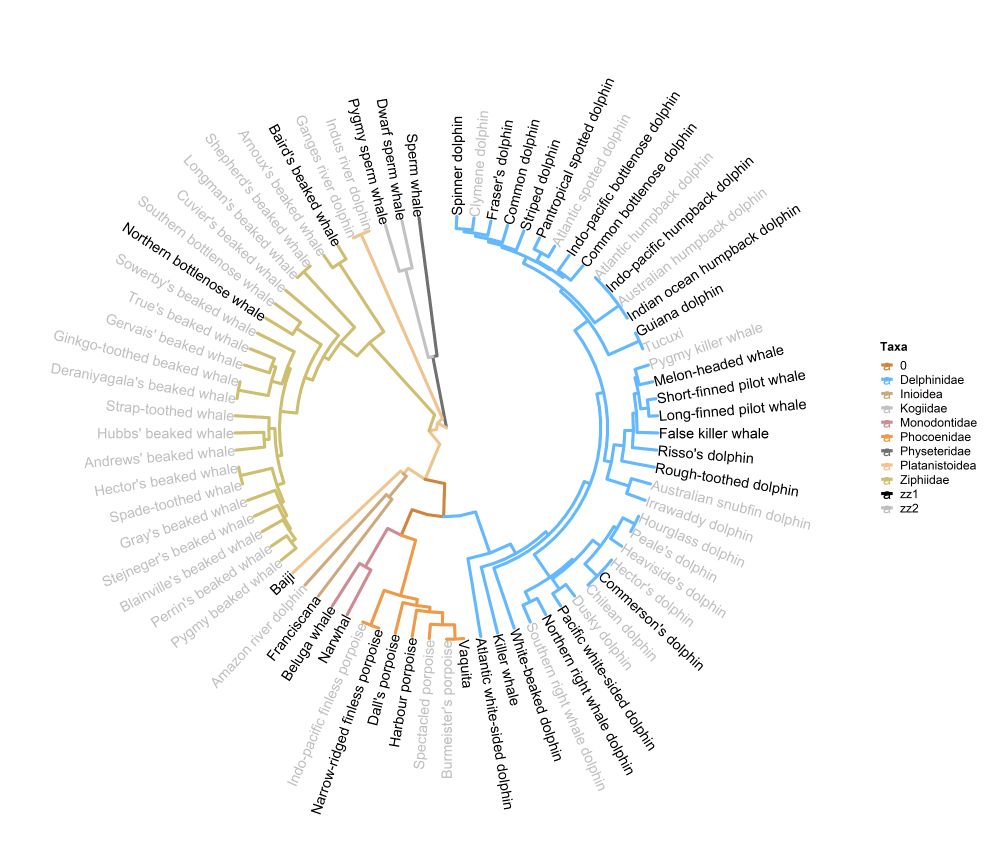
Using this method we were able to estimate the lifespans of 32 Female and 33 Male species of toothed whale. Data and methods in these R packages:
github.com/samellisq/ma...
github.com/samellisq/ma...
06.06.2025 10:14 — 👍 2 🔁 0 💬 1 📌 0
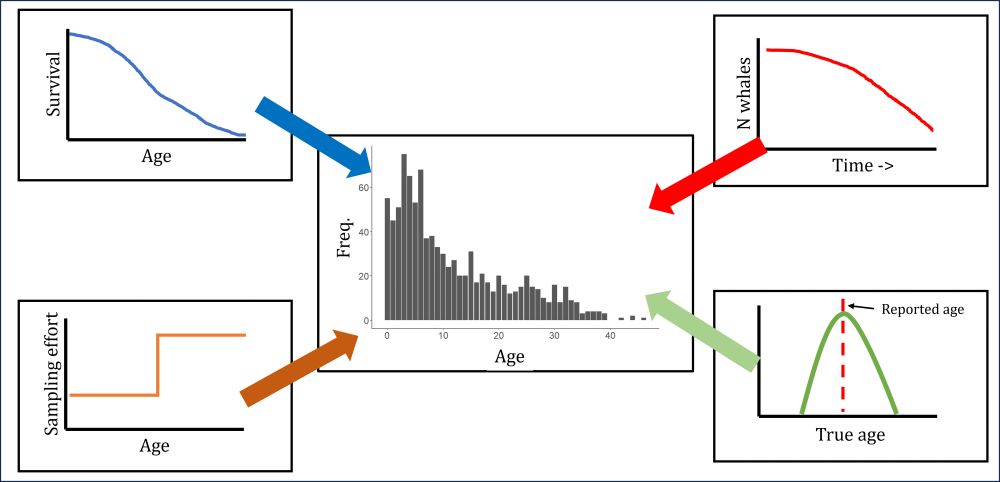
In the paper we develop Bayesian methods to infer the underlying mortality function of toothed whales from age-structured data, while carrying through potential sources of error into the final estimates.
06.06.2025 10:14 — 👍 2 🔁 0 💬 1 📌 0
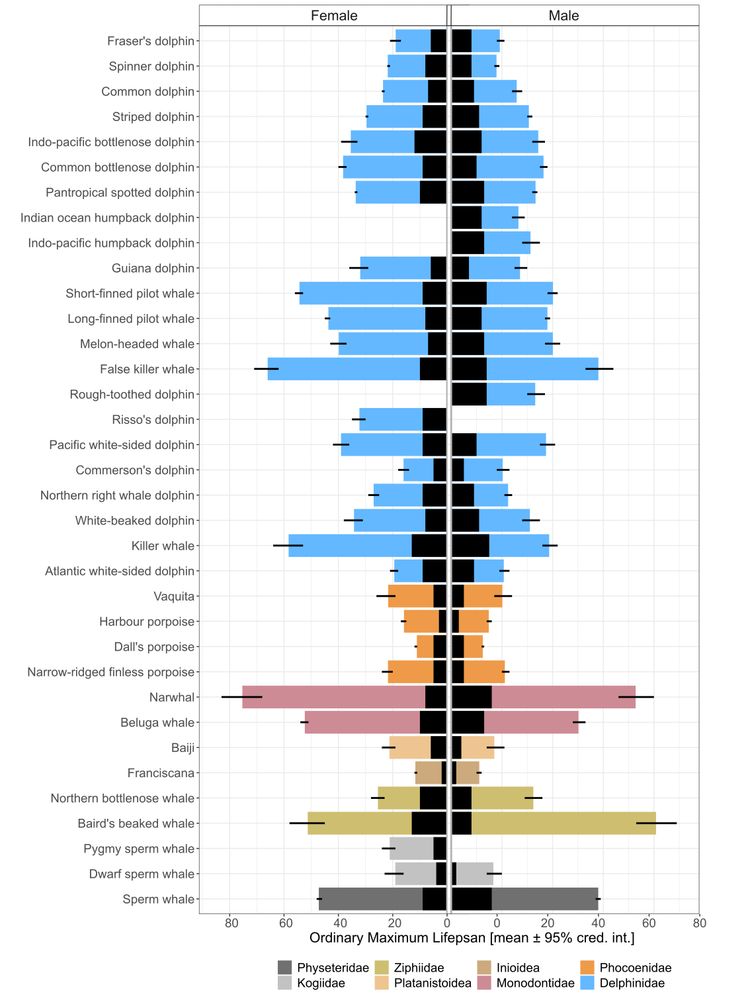
Very excited to see our paper using historical data to infer toothed whale lifespans published this week in the Biological Journal of the Linnaean Society (@biojlinnsoc.bsky.social)
doi.org/10.1093/biol...
w. @darrencroft.bsky.social @drwhale.bsky.social @mialybkaer.bsky.social, Dan Franks
06.06.2025 10:14 — 👍 22 🔁 11 💬 2 📌 0
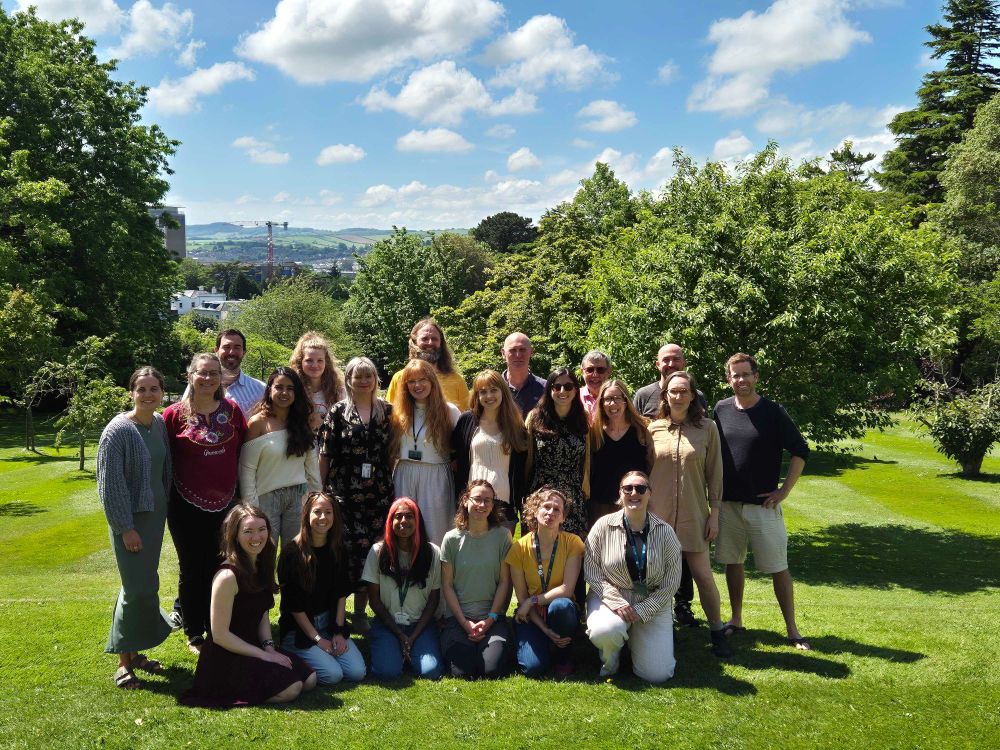
How good is it to get work with this lovely group of people in @crab-exeter.bsky.social every day? Answer: really really good!
13.05.2025 13:49 — 👍 11 🔁 2 💬 0 📌 0
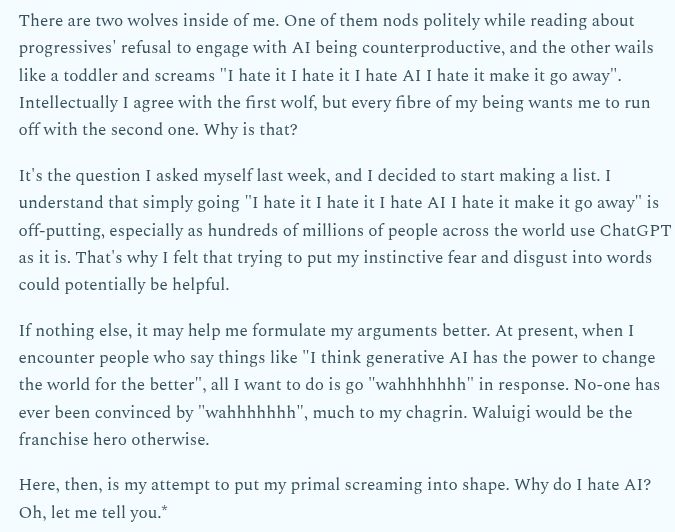
it's published! finally! in this week's newsletter: my attempt to go through every single reason why I both dislike and distrust generative AI: youngvulgarian.substack.com/p/11-things-... [free to read!]
09.05.2025 09:25 — 👍 469 🔁 128 💬 29 📌 60
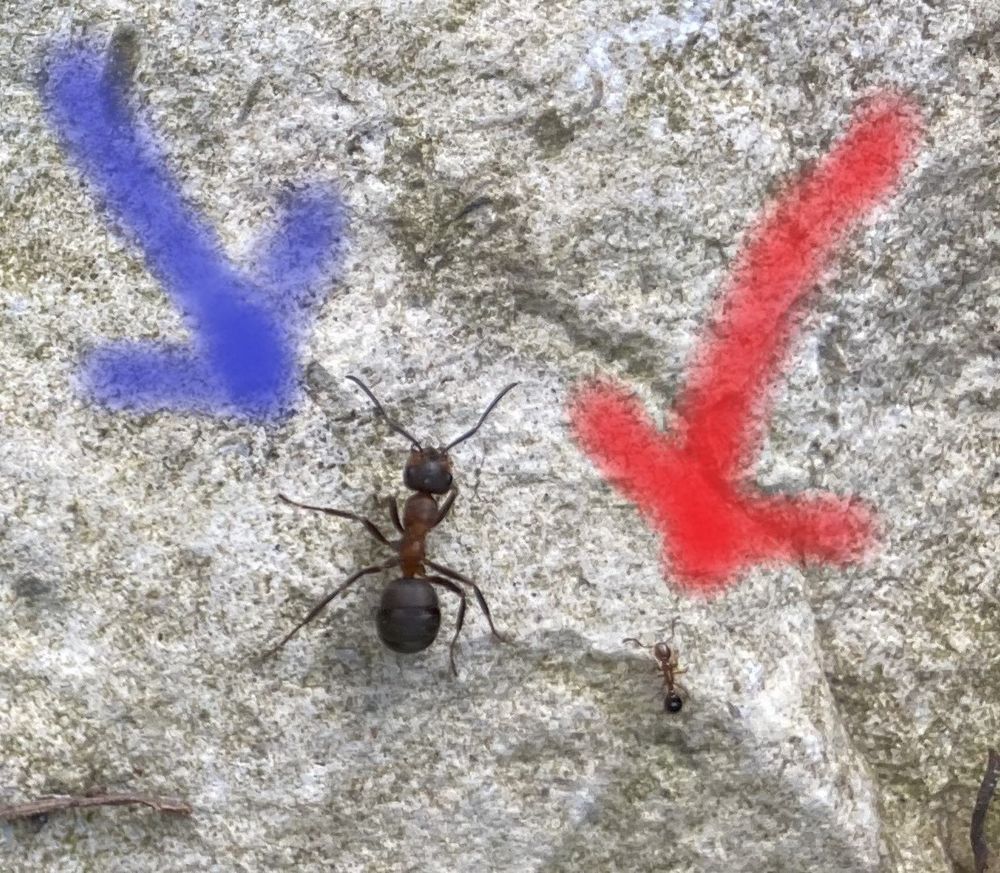
A large wood ant, with a dull black gaster and head, and dull brown thorax, is on a pale stone background, and indicated by a blue arrow. Next to it a much smaller ant with a shiny back gaster and shiny brown head and thorax is indicated by a red arrow. The blue arrow at is the wood ant Formica lugubris and the red arrow at is the shining guest ant Formicoxenus nitidulus.
Did you know about these tiny shiny ants (red arrow) living with wood ants (blue arrow)? They are Shining Guest Ants (Formicoxenus) and we have recently discovered that a wood ant nest can be home to several genetically distinct colonies of these 'guests'! onlinelibrary.wiley.com/share/author... 1/5
07.05.2025 13:49 — 👍 43 🔁 14 💬 2 📌 1
Powered by MHR
Postdoc job alert! I'm hiring a 3-yr postdoc to work on our Social Modifiers of Primate Lifespans grant. Job info and how to apply below. Deadline June 1. Pls share! jobs.exeter.ac.uk/hrpr_webrecr...
02.05.2025 15:43 — 👍 45 🔁 77 💬 1 📌 6
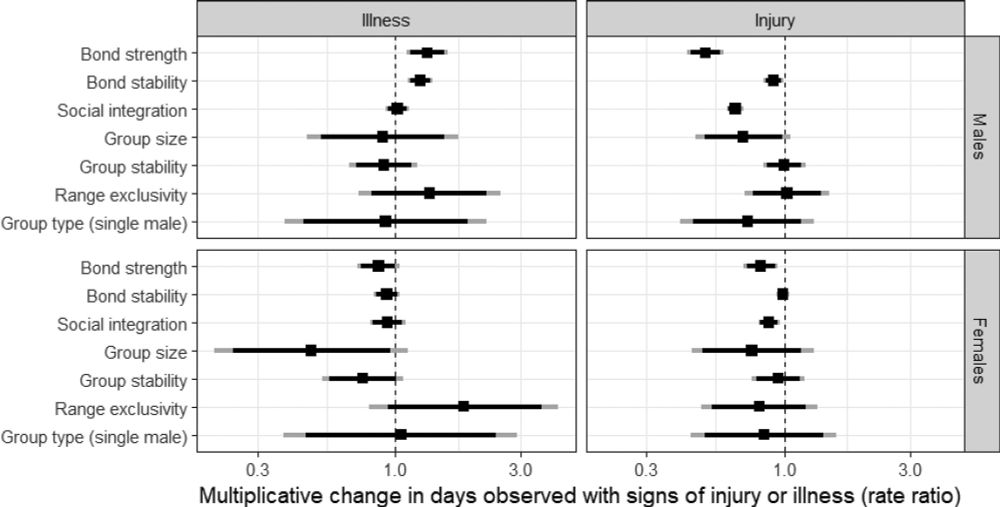
Group traits moderate the relationship between individual social traits and fitness in gorillas | PNAS
Evidence across a broad range of disciplines has demonstrated how individuals’ social
environments can impact their health, lifespan, reproduction,...
Thrilled to have the 1st project in my @snsf-ch.bsky.social Ambizione fellowship in @pnas.org this week. With Vic Martignac, @samellisq.bsky.social and @savinggorillas.bsky.social we asked what is a good social environment for a gorilla? And the answer was complicated... www.pnas.org/doi/10.1073/...
07.05.2025 15:24 — 👍 29 🔁 15 💬 2 📌 1
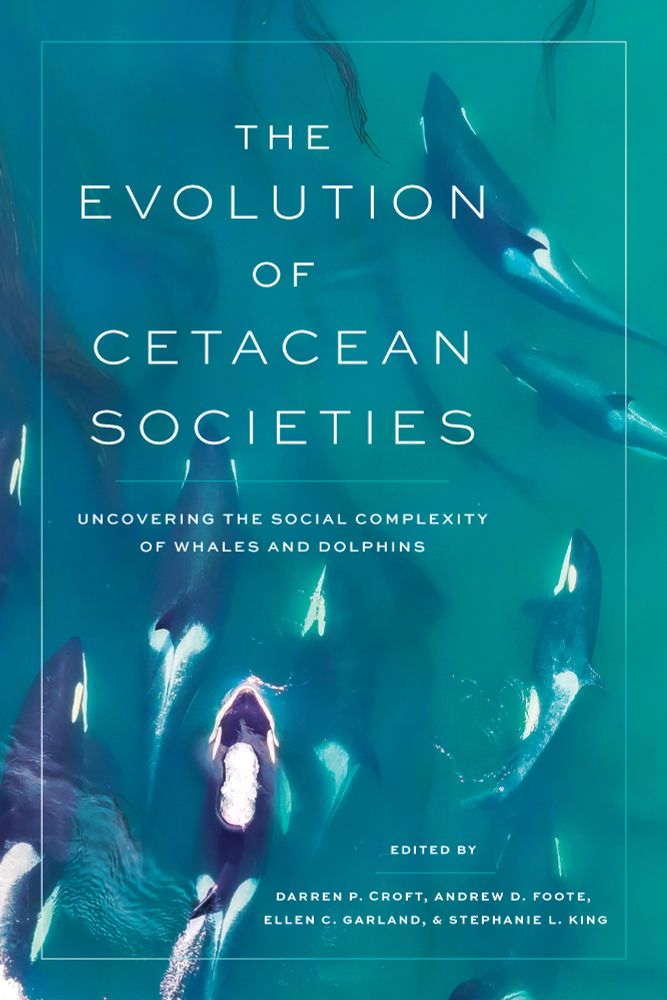
🐳 UPCOMING BOOK ALERT 🐬
The Evolution of Cetacean Societies
Edited by @darrencroft.bsky.social @andrewfoote.bsky.social @ellengarland.bsky.social and myself
Preorder available now
press.uchicago.edu/ucp/books/bo...
#whale #dolphin #animalbehaviour
26.03.2025 11:16 — 👍 117 🔁 36 💬 3 📌 6
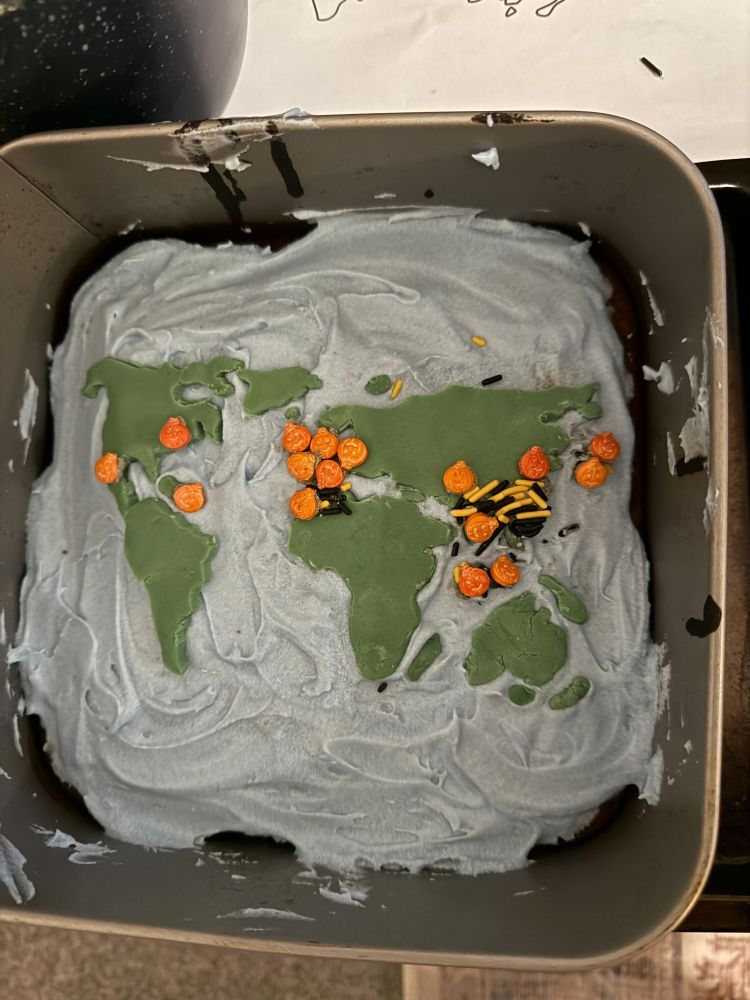
Bake your paper! Research tech extraordinaire, Macaela Skelton, made a cake of (some of) the study sites in the MacaqueNet database. She ran out of decorations before she could do them all 😆. Link to the paper that's been cake-ified: besjournals.onlinelibrary.wiley.com/doi/10.1111/...
21.02.2025 15:03 — 👍 22 🔁 5 💬 0 📌 0
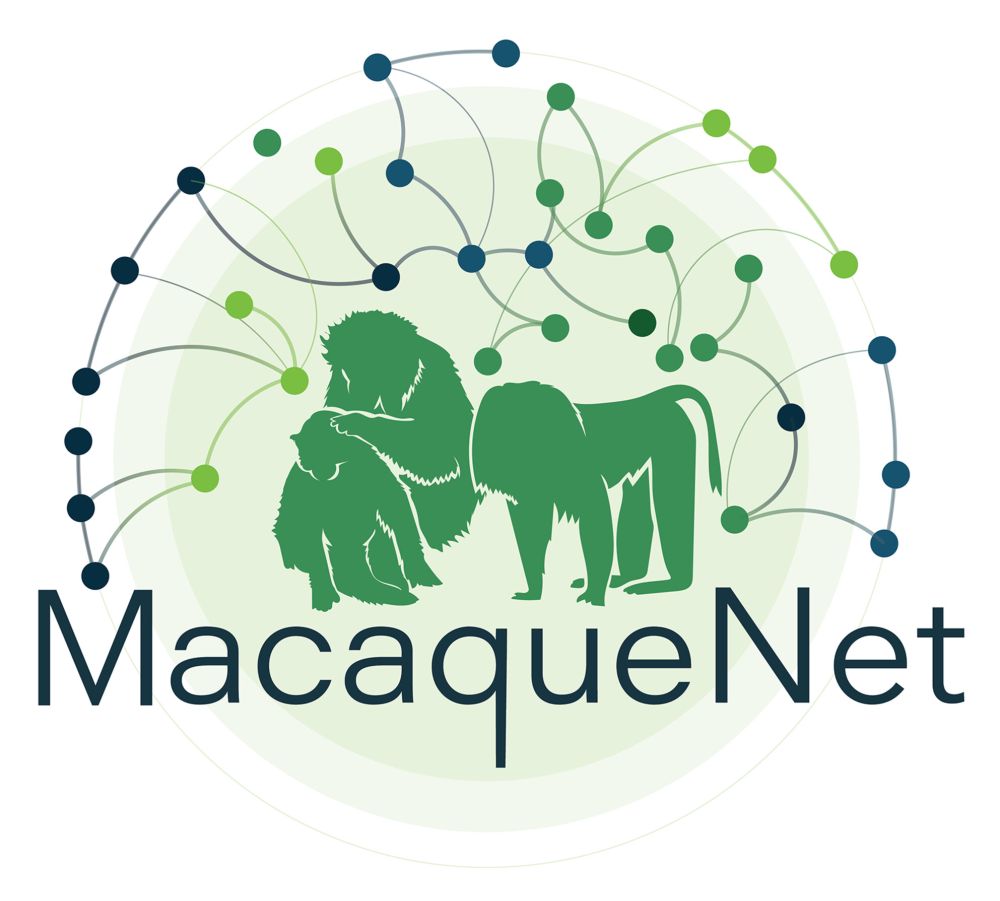
MacaqueNet: Advancing comparative behavioural research through large‐scale collaboration
We present MacaqueNet, a global community of macaque researchers who developed the first publicly searchable, standardised database on affiliative and agonistic behaviour. This cross-species database...
So exciting to see MacaqueNet out into the world! 🤩
Learn about our global community & database centralizing standardized affiliative & agonistic data from 61 populations across 14 macaque species: doi/10.1111/1365...
Explore >600 networks & request data: macaquenet.github.io/database/
12.02.2025 10:09 — 👍 132 🔁 72 💬 1 📌 12
Update: Abstract submission for #Behaviour2025 is now extended to Feb 15!
27.01.2025 16:07 — 👍 17 🔁 23 💬 0 📌 1

Recruiting a #PhD student to work on collective behaviour in real and artificial systems. Oct 2025 start. Working with @shoalgroup.bsky.social, Rob Heathcote, @willallennz.bsky.social, @joefresna.bsky.social, @marinapapap.bsky.social Advert: www.swansea.ac.uk/postgraduate...
Deadline: 24.02
27.01.2025 18:08 — 👍 22 🔁 25 💬 4 📌 0
+ two more with the BBSRC SW Bio
6. Using experients in wild rabbits to understand how and why social behaviour changes with age. Deadline: 11th Dec. More info & how to apply here: bpb-eu-w2.wpmucdn.com/blogs.bristo...
06.12.2024 14:45 — 👍 3 🔁 2 💬 1 📌 0
Senior Lecturer in Conservation & Animal Behaviour @ARU-biology.bsky.social. Interests: 🐵 behaviour, human-wildlife interactions & 🦠, not to mention🦕 📸 🎥 📖 🍳🏏 ⚽️ &🍺 (he/him)
I research behaviour. Writing. Illustration. Improv. Scicomm. Views my own. (He/Him) 🏳️🌈
website: www.viveknityananda.com
PhD student at University of Exeter | Animal behaviour, sociality, cognition and biologging 🐾🌳
Lecturer, Newcastle University
ASAB Communications Officer
PhD, MSc Primate Conservation, BSc Psychology: Specialisms - animal behaviour, behavioural ecology, cognition, animal welfare, conservation, primatology & human-animal interactions.
|| Behavioural Ecologist || Animal Behaviour || AcaMama ||
Interested in the development and evolution of social behavior
Assistant Professor @Macalester College, Grad Faculty @UMN USA | #AnimalBehavior & #Conservation Research | Mammals 🦁🐺🐘🦌🦫| #NewPI | Sci Ed | Team @abcmicrogrants.bluesky.social | he/him
Lab Website: stotrachakrabarti.com
Behaviour 2025 is the 38th International Ethological Congress to be hosted at Kolkata, India. Save the dates: 25-30 August, 2025. #Behaviour2025
For more details, check out our website: https://behaviourindia2025.in
Senior Lecturer. Anything collective behaviour - ants, slime moulds, fish, robots. Complex systems, emergence and self-organisation.
Our NIA-funded Research Network supports research that integrates animal models into studies of social aging. We facilitate idea exchange among early-career researchers working on animal models and support projects in areas of network interest.
International Society for Behavioral Ecology Congress, Turin (Italy) 20-24 July 2026
www.isbe2026.com
Primatologist lost in a Markov chain | benkawam.github.io.
Highlighting ground-breaking science, news and key papers from the Biological Journal of the Linnean Society, the world's oldest scientific journal dedicated to biological science.
Blog: https://www.linnean.org/news/categories/the-paper-trail
Professor of Evolutionary Biology at Anglia Ruskin University, Cambridge.
www.thepeergroup.org.uk
PEER Group research is focused on primate evolution and ecology, with a particular emphasis on vocal communication and the evolution of language.
Protecting the dolphins of Monkey Mia and Shark Bay, Australia through research | led by Georgetown University, University of Queensland, and Texas A&M University
Behavioural Ecologist | Communication | Cooperation | Conservation. Co-founder @Dwarf_Mongoose Research Project. Currently outback NSW.
Research team led by Alex Thornton at the University of Exeter's Centre for Ecology and Conservation, studying cognition in wild jackdaws and other creatures.
wildcognitionresearch.com
#FriendOrigins lab manager at @crab-exeter.bsky.social.
Behavioural database manager for #MacaqueNet & #CayoSantiago
Interests: Evolutionary origins of friendship 👯♂️ | Life history 🐒
Evolutionary biologist, President @linneansociety.bluesky.social, practitioner of healthy coding-fieldwork balance, human and dog mom, she/her, On-juhlee, not On-jolly
Dedicated to the study and conservation of the endangered Southern Resident Killer Whale (Orca) population in the Pacific Northwest since 1976
www.whaleresearch.com







![Comic. [two people in labcoats look at body pierced with blade draped over bench] PERSON 1: We found him lying uncomformably on the lab bench. I wonder if the iron-rich intrusion in his back is related. PERSON 2 with ponytail: It could be clastic. Maybe a rift opened in his body, and the intrusive material later fell into the hole. [caption] The Geology Department Investigates Their First Murder](https://cdn.bsky.app/img/feed_thumbnail/plain/did:plc:cz73r7iyiqn26upot4jtjdhk/bafkreidexczuo22iq6o77sexfgdpvgx6baetimwtkzoeb7h7glon7enx4y@jpeg)

![5-panel comic. (1) [teacher with long hair next to whiteboard] TEACHER: I’m supposed to give you the tools to do good science. (2) [teacher addressing students] But what *are* those tools? Methodology is hard and there are so many ways to get incorrect results. What is the magic ingredient that makes for good science? (3) TEACHER: To figure it out, I ran a regression with all the factors people say are important: [embedded list in sub-panel, cut off at end] Outcome variable: correct scientific results. Predictors: collaboration; skepticism of others’ claims; questioning your own beliefs; trying to falsify hypotheses; checking citations; statistical rigor; blinded analysis; financial disclosure; open data (4) TEACHER: The regression says two ingredients are the most crucial: 1) genuine curiosity about the answer to a question, and 2) ammonium hydroxide. (5) STUDENT: Wait, why did *ammonia* score so high? How did it even get on the list? LONG HAIR: ...And now you’re doing good science!](https://cdn.bsky.app/img/feed_thumbnail/plain/did:plc:cz73r7iyiqn26upot4jtjdhk/bafkreigzaphhj4mfgfrxddlvdmw47335gnwzqbfqvrnff5x4oovgpf36nq@jpeg)











